
Tomonobu Itagaki is a Japanese video game designer best known for creating the Dead or Alive series and also reviving the Ninja Gaiden franchise in 2004. In 2009, he was chosen by IGN as one of the top 100 game creators of all time.
Ninja Gaiden is a media franchise based on action video games by Tecmo featuring the ninja Ryu Hayabusa as its protagonist. The series was originally known as Ninja Ryukenden in Japan. The word "gaiden" in the North American Ninja Gaiden title means "side story" in Japanese. The original arcade version, first two Nintendo Entertainment System games and Game Boy game were released as Shadow Warriors in PAL regions. As of 2008, the series has shipped over 7.7 million copies.

The following is a list of characters from the Dead or Alive video game series, created by Tecmo and Team Ninja.

Team Ninja is a Japanese video game developer, and a division of Koei Tecmo, founded in 1995 as a part of Tecmo. It was founded by Tomonobu Itagaki, and is best known for franchises such as Ninja Gaiden, Dead or Alive and Nioh.

Ninja Gaiden 3 is an action adventure hack and slash video game developed by Team Ninja and published by Tecmo Koei. It is the sequel to Ninja Gaiden II, and was released worldwide for the PlayStation 3 and the Xbox 360 in March 2012. An updated version, titled Ninja Gaiden 3: Razor's Edge, was released later that year, originally published by Nintendo for the Wii U, and later ported to multiple platforms.

Ninja Gaiden is an action adventure hack and slash video game developed by Team Ninja and published by Tecmo for the Xbox. It was released in March 2004. Set in the futuristic version of the 21st century, players control Ryu Hayabusa, a master ninja, in his quest to recover a stolen sword and avenge the slaughter of his clan. It was inspired by Tecmo's Ninja Gaiden series, and is set in the same continuity as Team Ninja's Dead or Alive fighting games.
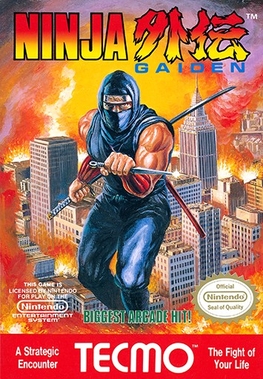
Ninja Gaiden, released in Japan as Ninja Ryūkenden and as Shadow Warriors in Europe, is an action-platform video game developed and published by Tecmo for the Nintendo Entertainment System. Its development and release coincided with the beat 'em up arcade version of the same name. It was released in December 1988 in Japan, in March 1989 in North America, and in August 1991 in Europe. It has been ported to several other platforms, including the PC Engine, the Super NES, and mobile phones.
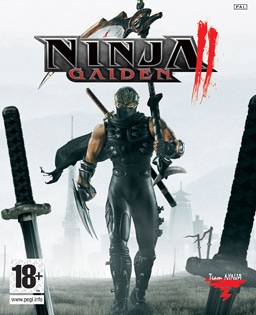
Ninja Gaiden II is a 2008 action adventure hack and slash game developed by Team Ninja and published by Microsoft Game Studios for the Xbox 360. It is the sequel to the 2004 title Ninja Gaiden, making it the second 3D title in the series of the same name, and was released worldwide in June 2008. A reimagined and heavily altered version, titled Ninja Gaiden Sigma 2 was released for the PlayStation 3 later in 2009, and was published by Tecmo Koei, followed by Ninja Gaiden Sigma 2 Plus for the PlayStation Vita in 2013.

Dead or Alive 5 is a 2012 fighting game developed by Team Ninja and published by Tecmo Koei for the PlayStation 3 and Xbox 360. It is the fifth main entry in the Dead or Alive fighting series and the first to have a multi-platform release since Dead or Alive 2 as well as the series' first installment that was released for the PlayStation 3.

TMNT is an action video game featuring the Teenage Mutant Ninja Turtles. It was developed by Ubisoft Montreal and published by Ubisoft for Xbox 360, Wii, PlayStation 2, GameCube, Nintendo DS, and PlayStation Portable, as well as for Microsoft Windows on March 20, 2007. It is based on the 2007 film of the same name.

Ninja Gaiden: Dragon Sword is a 2008 action-adventure video game released for the Nintendo DS, developed by Team Ninja and published by Tecmo. A main installment in the Ninja Gaiden series, it features Ryu Hayabusa as the protagonist. The game is the first portable video game title in the series to be developed by Team Ninja and the first game developed by this company to be released for the Nintendo system. Dragon Sword is set between Ninja Gaiden and Ninja Gaiden II.
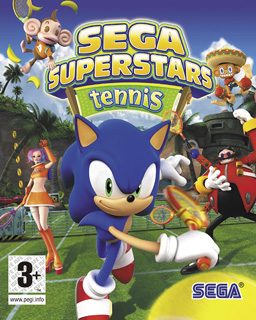
Sega Superstars Tennis is a sports video game developed by Sumo Digital and published by Sega. It is the second title in the Sega All-Stars series, preceded by Sega Superstars (2004), and crosses over characters, locations, and soundtracks from several Sega franchises, including Sonic the Hedgehog, Space Channel 5, and Super Monkey Ball.
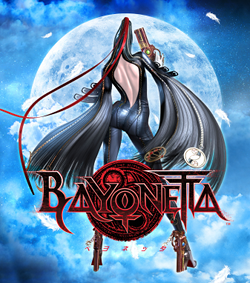
Bayonetta is a 2009 action-adventure hack and slash video game developed by PlatinumGames and published by Sega. It was released for PlayStation 3 and Xbox 360 in Japan in October 2009, and in North America and Europe in January 2010. It was released on Wii U in September 2014, Windows in April 2017, Nintendo Switch in February 2018, and PlayStation 4 and Xbox One in February 2020.
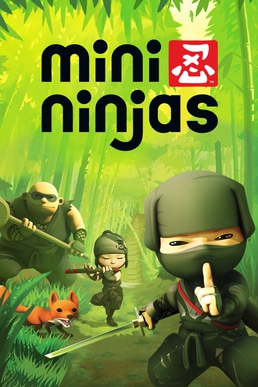
Mini Ninjas is a 2009 action-adventure game developed by IO Interactive and published by Eidos Interactive for Microsoft Windows, Nintendo DS, PlayStation 3, Wii and Xbox 360. A Mac OS X version of the game was released on July 8, 2010, by Feral Interactive. In December 2011, it was announced that the game would be also made available as a browser game for Google Chrome.

Ninja Gaiden Sigma 2, stylized as Ninja Gaiden Σ2, is a port of the 2008 Xbox 360 video game Ninja Gaiden II, and was developed by Team Ninja exclusively for the PlayStation 3 in 2009. It includes the entirety of the original story mode as well as various changes to the game's design, along with updated textures and a 720p resolution. The game changes Ninja Gaiden II in a similar, but not identical way to how Ninja Gaiden Sigma changed the original Ninja Gaiden. A port for the PlayStation Vita, titled Ninja Gaiden Sigma 2 Plus, was released in 2013.

Puss in Boots is an action game based on the film of the same name. It was developed by Blitz Games Studios, and released by THQ for Xbox 360, PlayStation 3, Wii and Nintendo DS. It features support for Kinect and PlayStation Move on the respective platforms.

Rayman Legends is a platform video game developed by Ubisoft Montpellier and published by Ubisoft. It is the fifth main title in the Rayman series and the direct sequel to the 2011 game Rayman Origins. The game was released for Microsoft Windows, PlayStation 3, Xbox 360, Wii U, and PlayStation Vita platforms in August and September 2013. PlayStation 4 and Xbox One versions were released in February 2014, with a Stadia version released in November 2021. A Nintendo Switch port, titled Rayman Legends Definitive Edition, was released in North America, Europe and Australia on September 12, 2017.

Angry Birds Trilogy is a video game co-developed by Rovio Entertainment, Exient Entertainment, Housemarque, and Fun Labs and published by Activision.
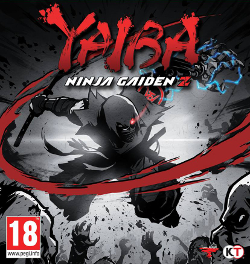
Yaiba: Ninja Gaiden Z is an action adventure hack and slash game, and a spin-off of the Ninja Gaiden franchise. It was published by Tecmo Koei and developed by Spark Unlimited. Comcept's Keiji Inafune conceptualized the game, providing character designs and creating the character of Yaiba. The game was released for the PlayStation 3, Xbox 360, and Microsoft Windows worldwide in March 2014.

Dead or Alive 5 Ultimate is a fighting game in the Dead or Alive series, developed by Team Ninja, and released by Tecmo Koei for the PlayStation 3 and Xbox 360 in September 2013. It was followed by an Arcade edition later in 2013. It is the first arcade game to be released by Koei Tecmo since Dead or Alive 2 Millenium in 2000.



















